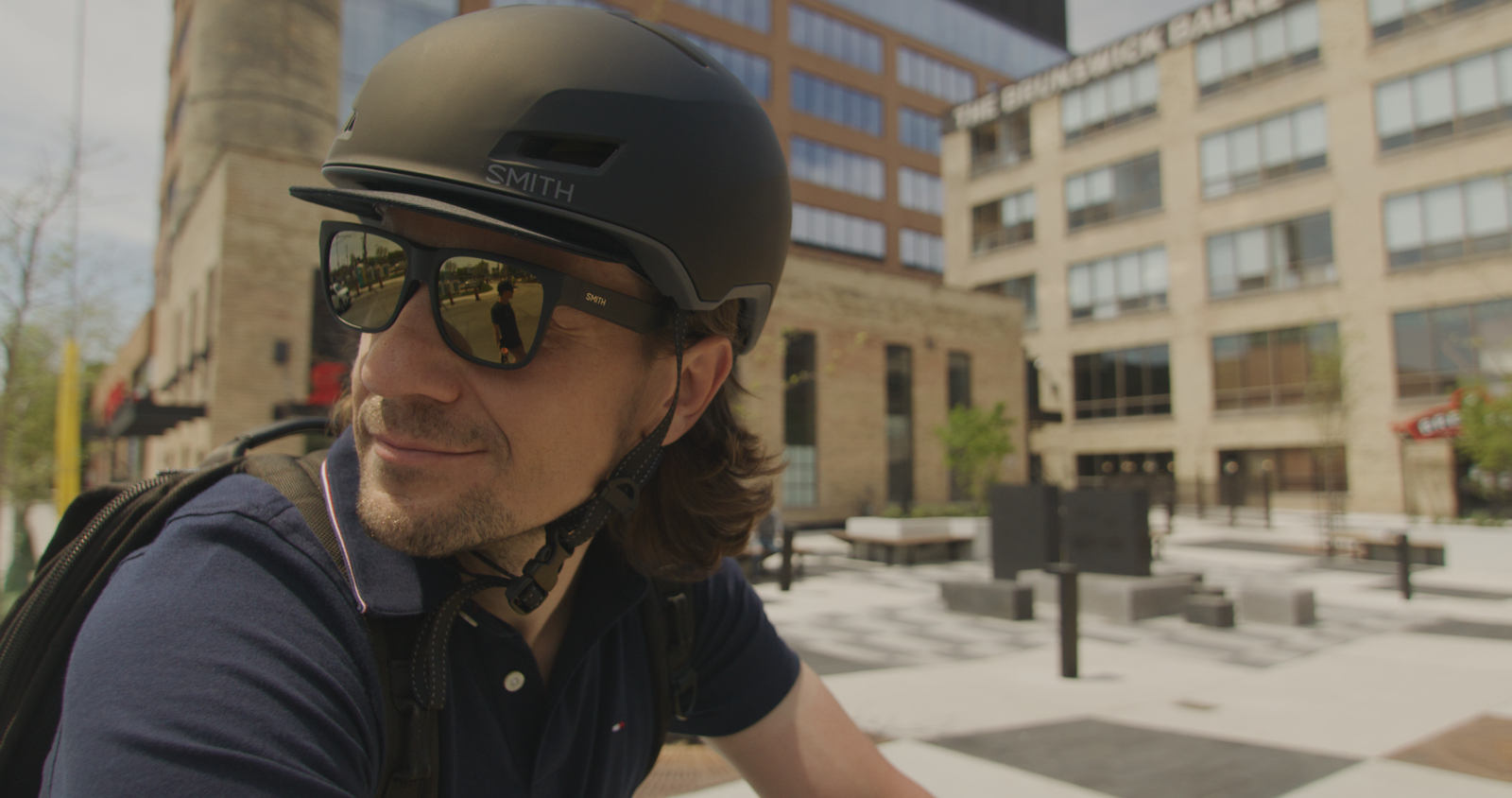Roughly 11 years ago, when Paul Wojciechowski started commuting to work by bike, he went big. Sure, his equipment was fairly modest. He fixed up his brother’s old clunker and began riding in March. It was one of the coldest and wettest Marches Wojciechowski could remember. Each outing was a bit of an experiment as he tried to figure out what clothing kept him warm and comfortable, without overheating. The distance he had to ride was quite significant for a beginner. “It was exactly 23.5 km one way for the most enjoyable and safest route,” he says with an engineer’s precision. “If I had more time during the day, I could stretch it out to 30 km. If I was really in a rush, if I was running late, I could cut it down to 21 km.”
RELATED Smith Express MIPS helmet review: Great looks and performance for your commutes and beyond
He wasn’t daunted by the time, about 45 minutes to an hour each way, or the distance. To Wojciechowski, commuting was actually very efficient and practical. “Before I started commuting to work, like many people, I’d pay a yearly fee to go to a gym,” he says. “Every other day, I’d go after work. I’d lift weights or do cardio. Each time, you are at the gym for at least an hour minimum. So my commute in the beginning was 45 minutes to an hour on a commuter bike. It became a substitute for the gym. Also, I had young kids at the time, so it also became a way to make some time for myself.”

Wojciechowski kept fit, saved some money and improved his overall mood, all thanks to his rides. His car, however, didn’t do so well. “I had a car that I think I filled up only twice that year,” he says. “In summer, after four or five months without running it, I went to turn it on and the gasoline was stale. The car didn’t want to turn on. I had to get some premium gas to put in the tank to make it work.”
After a few years, the engineer, who had worked in heating and ventilation, automotive and audio, got a new job at a new office. One facet of the new gig caught Wojciechowski off guard: he had to drive a lot to meet with clients. That requirement meant he could only commute by bike a few times a week. “That’s something I didn’t anticipate in the interview. Afterwards, I thought, ah crap,” he says. The commute was also shorter, around 13 to 15 km. Wojciechowski, who was absolutely hooked on riding by this point, needed a bigger fix. He added morning road rides to his routine.

Today, Wojciechowski is quite active in many cycling disciplines. He’s part of a club and helps to marshal road rides. He races cross country and cyclocross, too. There haven’t been any commutes in a while because of the pandemic. Soon, though, Wojciechowski will be heading back into the office. He’s once again working in the audio field. His ride will be a whopping 30 to 40 km.
“Don’t get over-complicated with your bike,” Wojciechowski says when discussing gear for commuting. “Don’t ride to work on a mountain bike with knobby tires. It’s not the right tool. Get tires that are wider and semi-slick. Ride them with lower pressure. Even go tubeless.” Wojciechowski doesn’t carry too much with him on his commute. His ride essentials and laptop are transported in a durable backpack. At his office, he has what he needs to spruce up after the effort: a few changes of clothes for a week, hair gel and deodorant. There’s oatmeal for refuelling, too.

Wojciechowski puts a lot of thought into safety, from the routes he takes to his musings on long rides. Before Garmin came out with its Varia rear radar, he had brainstormed something similar. Wojciechowski feels that some sort of signaling device is necessary for commuters. He doesn’t think hand signals are enough. “I find, especially in Toronto where there are streetcar tracks and potholes, you could compromise your safety by waiving your hands,” he says. “When you’re a roadie riding with a group and the cars are giving you space, hand signals are enough. But when you are a commuter, you are usually by yourself.” Wojciechowski feels lone commuters would be safer if they could keep their hands on their bars, especially through turns on rough surfaces.
A helmet that can boost on-road safety is the Smith Express, which Wojciechowski wears in the video above. It has an integrated rear light with multiple settings, which increases rider visibility amongst traffic. The MIPS version of the Express will help to address the rotational forces that can affect the head in a crash. It’s all top technology for any commute.

Wojciechowski has passed on his passion for cycling to his two boys, ages 13 and 12. In fact, the boys and Wojciechowski’s wife are planning to attend an upcoming cross country Ontario Cup event. “I didn’t have a passion when I was a kid, but my kids do,” he says. “I’ve embedded cycling in them, giving them opportunities to race.” Wojciechowski feels his own teenage years were directionless. In the video, he says he “was living in the streets.” That expression, for Wojciechowski, doesn’t mean homelessness, but more aimlessness—literally out on the street, an immigrant to Canada from Poland, hanging out without much purpose. He later found purpose and cycling. Now, he hopes cycling can be a bedrock for his sons. That seems a completely solid plan.


